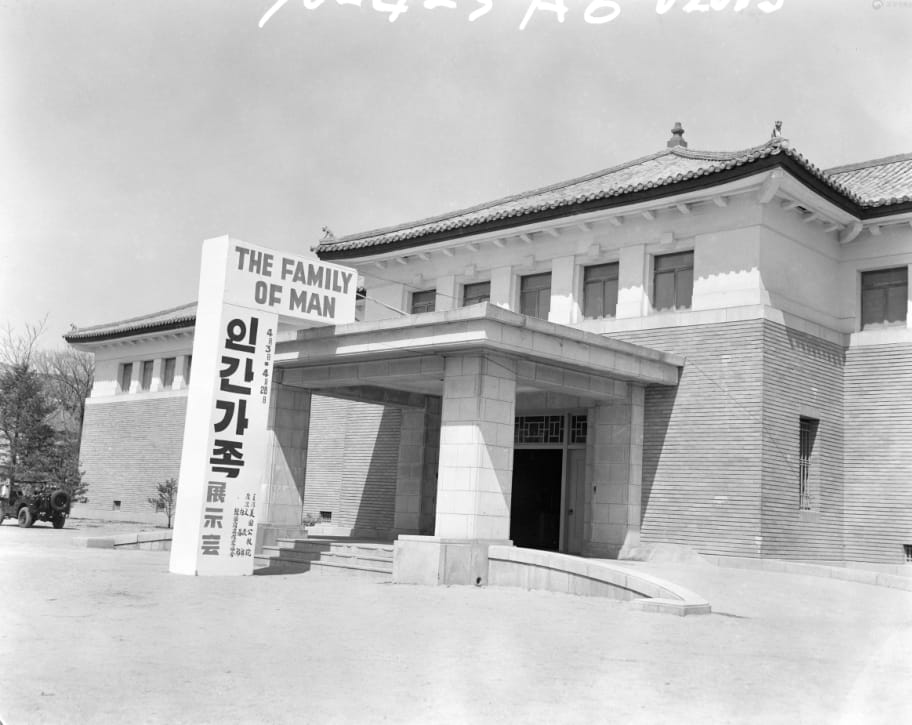
The Family of Man, 1957, Image provided by National Archives of Korea
The Family of Man
* Source: Multilingual Glossary of Korean Art. Korea Arts Management Service
Related
-
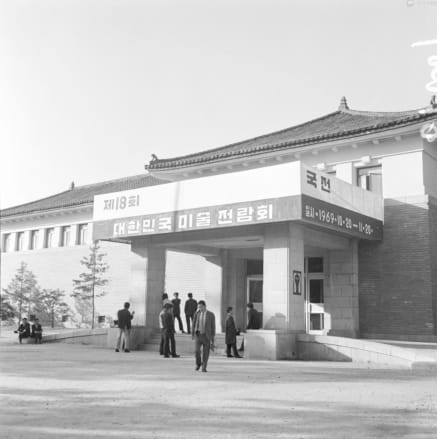
Gyeongbokgung Palace Museum
Gyeongbokgung Palace Museum was a national museum located in Gyeongbokgung Palace from 1949 to 1973. It was used as an exhibition hall for the National Art Exhibition (Gukjeon) of Korea. It became the Museum of the Japanese Government-General of Korea in 1939, then was used as a venue of the Joseon Art Exhibition until 1944 and became the Gyeongbokgung Palace Museum after Independence. In 1949, it was used for the first National Art Exhibition of Korea. It also hosted large scale exhibitions, such as the Science Exhibition, the National Middle and High School Student Art Exhibition, the International Children’s Art Exhibition, and the National Commercial and Industry Art Exhibition from the 1950s to the 1960s, especially when there were few public museums. In 1957, it hosted The Family of Man, a photographic exhibition which travelled around the world starting at the Museum of Modern Art in New York City. The Gyeongbokgung Palace Museum was also the base of the National Museum of Contemporary Art from 1969 until its relocation to Deoksugung Palace in 1973. It was used as the National Folk Museum of Korea from 1975 to 1993 and was demolished during the restoration project of Gyeongbokgung Palace in 1998.
-
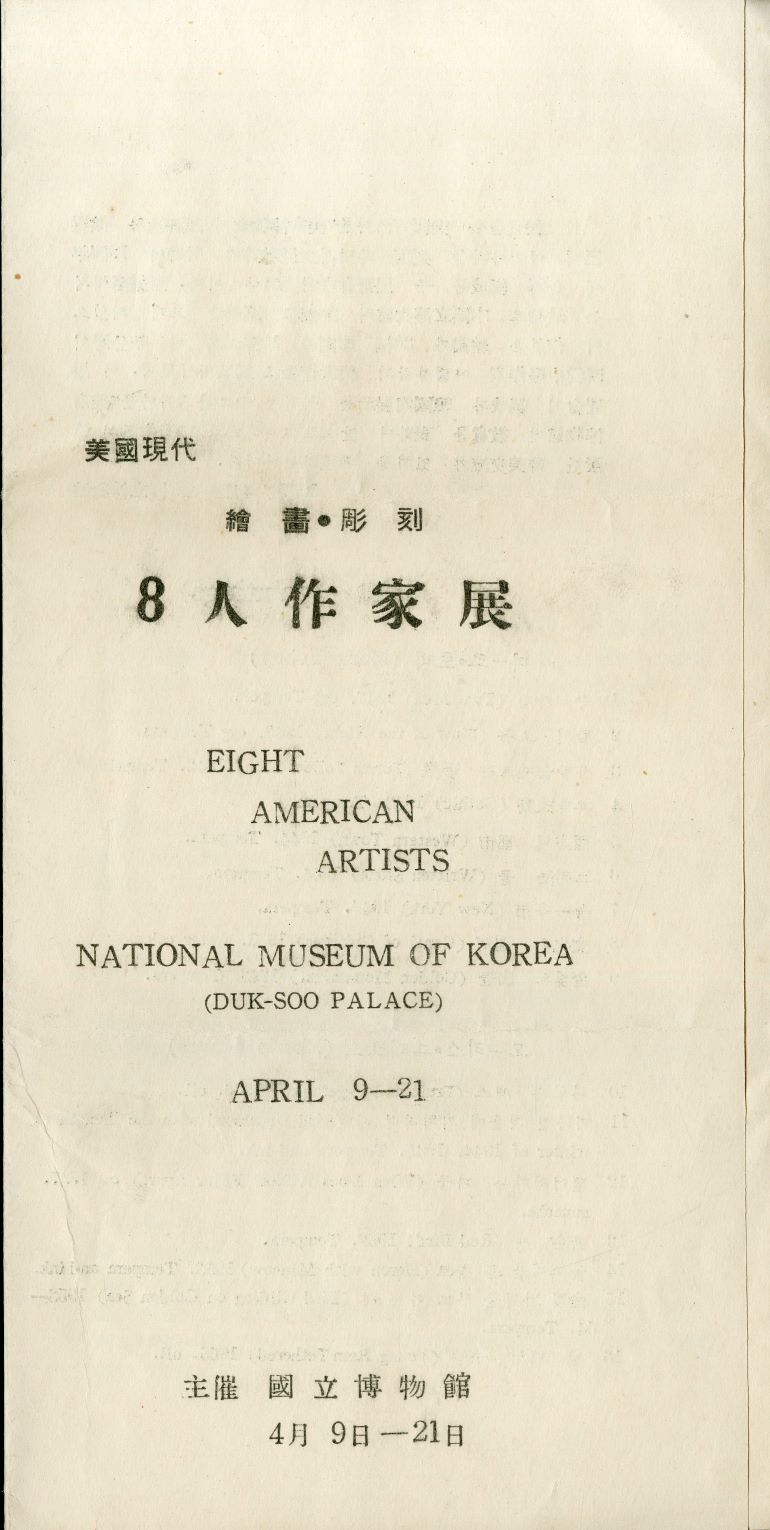
Eight American Artists
A travelling exhibition organized by the Seattle Art Museum that was held in Asia and Europe. In Korea, the exhibition was held from April 9 to 21, 1957 at the National Museum at Seokjojeon in Deoksugung, the present location of the Deoksugung Museum. The United States Information Service in Korea supported the exhibition. The exhibition featured 30 paintings by four abstract artists: Mark Tobey, Morris Graves, Kenneth Callahan, and Guy Anderson, and 10 metalwork sculptures by four sculptors: Rhys Caparn, David Hare, Seymour Lipton, and Ezio Martinelli. The exhibition introduced contemporary American art to the Korean art community, and it influenced the development of Korean abstract art.
Find More
-
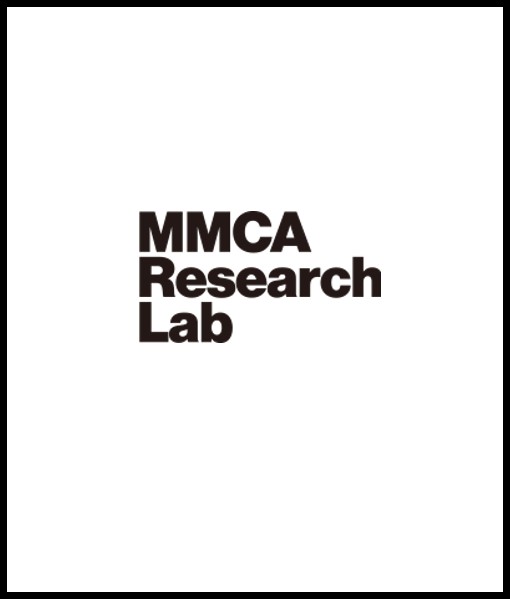
Portrait Photography Research Society of Seoul
Portrait Photography Research Society of Seoul [Seoul insang sajin yeonguhoe; PPRSS] is an organization of photographers founded in October 1946 in Seoul. Hyun Ilyeong served as its president, and other members include Lim Sukje, Han Sanghui, Kim Jinhae, Lee Changgyu, Kim Gwangbae, and Park Pilho. As the poor domestic supply of photographic materials led to great difficulty in photography production, the Korean Photography Formation Committee [Joseon sajin gyeolseong wiwonhoe, KPC], an organization that included reporters, salespeople, amateurs photographers, and material dealers, was established in September 1945 with the photographer Park Pilho as the chairman. After the establishment of the KPC, photographers in various fields founded an organization to rebuild and develop Korean photography. The Portrait Photography Research Society of Seoul was founded modeled after the Portrait Photography Research Society of Gyeongseong [Gyeongseong insang sajin yeonguhoe], a group of commercial photographers who operated photo studios before Korea’s liberation from Japan. The members of the PPRSS were also involved in the Joseon Art Photography Association [Joseon sajin yesul yeonguhoe] and the Korean Photography Alliance [Joseon sajin dongmaeng]. After Korea’s liberation from Japan, they sought not only to disseminate photographic materials and revitalize commercial photography, but also to explore channels and directions for photography in various fields.
-
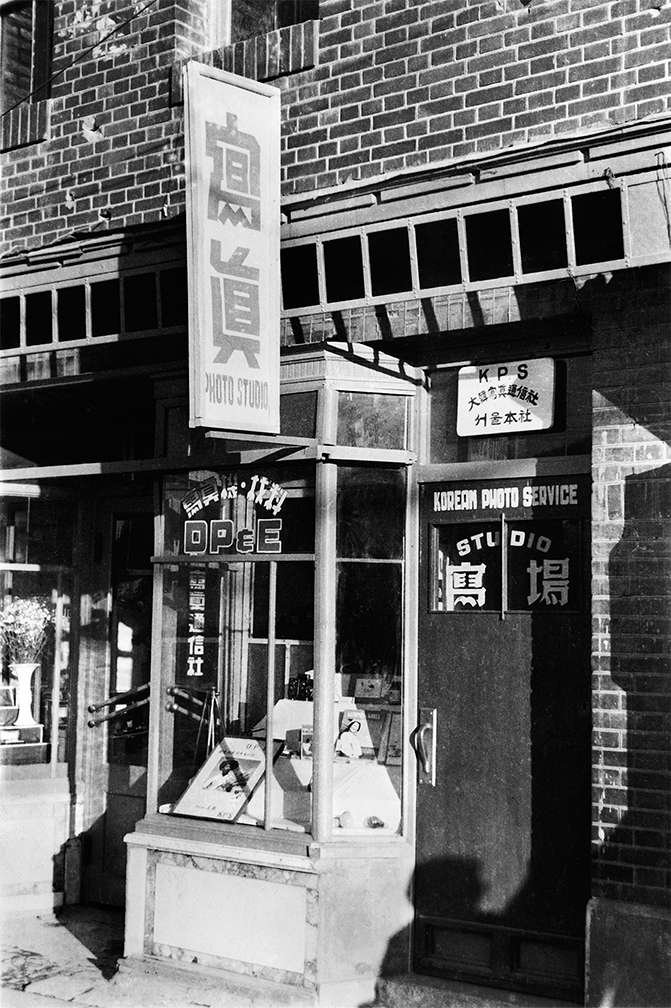
Korean Photo Service
The Korean Photo Service [Daehan sajin tongsinsa] was founded in June 1952 by Lim In-sik (1920–1998). It documented major government events and historical incidents, including the Korean War, and provided photographs to major news agencies abroad, including the Associated Press (AP). When the Korean War broke out, Lim led the photo unit under the Mental Strength Department of the Ministry of Defense. In May 1952, he left the army to establish Korean Photo Service, where he served as chief editor and editorial director. The office building of the Korean Photo Service was located on Namdaemun-ro 3-ga, Jung-gu, Seoul, and on the first floor was a photo shop and studio that sold photographic materials and equipment and provided developing and printing services. The Korean Photo Service was organized into several departments, with Park Jinsik serving as editor-in-chief, Moon Je-an as news director, and Jeong Doseon as chief of photography. The photography department included photographers such as Lim Sukje (the eldest brother of Lim In-sik) and Bang Samseong. The service captured images of important historical events in the liberated space, including photographs for the Republic of Korea Army, an English-language pictorial book published by the ROK Army Headquarters and distributed to UN member countries. Some of Lim's Korean War and 1950s photographs can be found at the Chungam Archive, run by his family. In 2013, Lim's family donated more than 1,000 pieces of his photographs and related materials to the Seoul Museum of History.
-

Busan Art Photography Research Society
Busan Art Photography Research Society [Busan yesulsajin yeonguhoe, BAPRS] was founded in May 1947 in Busan with the Busan Photographic Society [Busan gwanghwahoe], which was established in April 1946 by Limb Eungsik, as the predecessor. In May 1947, the Busan Photographic Society [Busan Gwanghwahoe] held a Citizen Photo Contest at Yongdusan Park, and it was a great turnout with well over 100 photography enthusiasts in attendance. This led the Busan Photographic Society to be renamed the Busan Art Photography Research Society and to promote group activities. At the time of its foundation, Limb Eungsik served as the president, Lee Geumecheol as the vice-present, and Ko Jongik as the secretary. Its first member exhibition was held in January 1948, and the second one was held in December of the same year. BAPRS also published its magazine Areusseu sajin nyus (Arts photo news), providing a stage for the activities of amateur and professional photographers in Busan and the Gyeongsangnam-do region. When the Korean War broke out in 1950 and many photographers moved to the temporary capital Busan, BAPRS held a joint photo exhibition in collaboration with the Korean Photographic Art Research Association [Daehan sajin yesul yeonguhoe], a leading photographer organization in Seoul, in June 1952 at Mihwadang Department Store in Busan. This encouraged photographers who gathered in Busan from across the country to establish the Photo Artists Society of Korea [Hanguk sajin jakga hyeophoe], a leading Korean photography organization connecting the capital and local provinces. Later, BAPRS carried on its legacy as the Gyeongnam branch of the Photo Artists Society of Korea.






